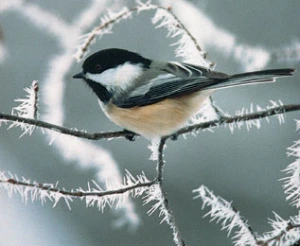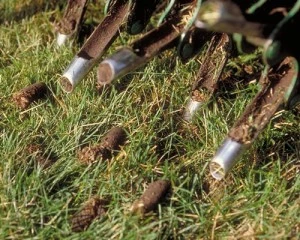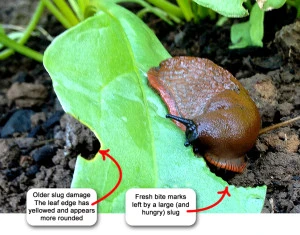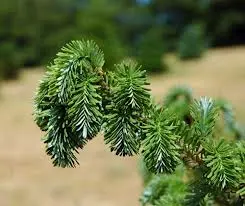
Our Blog
Use our blog as a resource of information pertaining to lawn and landscape maintenance information and services for your properties.

Use our blog as a resource of information pertaining to lawn and landscape maintenance information and services for your properties.
1 . Choose a rain barrel made with food-grade plastic that holds at least 55 gallons of water. Locate it uphill from the area you’d like to irrigate, near a downspout, and on a hard, flat surface. You can increase the water pressure coming from your rain barrel by elevating it on cinder blocks. To create a cinder-block base, place three 8-by-8-by-16-inch cinderblocks lengthwise (flat surface down, holes pointed out) and arrange them so they form a triangle. Check to make sure the blocks are level and then center the rain barrel on top of the base.
. Choose a rain barrel made with food-grade plastic that holds at least 55 gallons of water. Locate it uphill from the area you’d like to irrigate, near a downspout, and on a hard, flat surface. You can increase the water pressure coming from your rain barrel by elevating it on cinder blocks. To create a cinder-block base, place three 8-by-8-by-16-inch cinderblocks lengthwise (flat surface down, holes pointed out) and arrange them so they form a triangle. Check to make sure the blocks are level and then center the rain barrel on top of the base.
2. Select a front side for your barrel and attach a 3/4-inch spigot about 2 inches from the bottom using a bulkhead fitting. Reach down into the barrel to determine the lowest spot you can position the fitting, and drill a hole in the outside of the barrel. Thread the spigot into the fitting (using a reducer, or bushing, if necessary) so you get a tight, leak-free fit. “Use a spigot with a 3/4-inch male inlet, rather than a 1/2-inch one, because it allows more water to flow through, which is especially important if you plan to hook a soaker hose up to the barrel,” says Lenny Librizzi, who has installed 40 rainwater-harvesting systems for community gardens (including a couple as part of the Organic Gardening WaterWorks project) in his work for the Council on the Environment in New York City.
lowest spot you can position the fitting, and drill a hole in the outside of the barrel. Thread the spigot into the fitting (using a reducer, or bushing, if necessary) so you get a tight, leak-free fit. “Use a spigot with a 3/4-inch male inlet, rather than a 1/2-inch one, because it allows more water to flow through, which is especially important if you plan to hook a soaker hose up to the barrel,” says Lenny Librizzi, who has installed 40 rainwater-harvesting systems for community gardens (including a couple as part of the Organic Gardening WaterWorks project) in his work for the Council on the Environment in New York City.
 3. Prevent your rain barrel from overflowing by installing a downspout diverter. This ...
3. Prevent your rain barrel from overflowing by installing a downspout diverter. This ...
Rhododendron-Facts
Height: 5 feet
Spread: 5 feet
Sunlight: ![]()
![]()
Hardiness Zone: 3b
Group/Class: P.J.M. Series
Description:
A pretty broad-leaf evergreen shrub with showy purple-pink flowers in spring and a compact upright habit, very hardy, interesting fall coloration; absolutely must have well-drained, highly acidic and organic soil, use plenty of peat moss when planting
Ornamental Features:
P.J.M. Rhododendron is covered in stunning clusters of lightly-scented lavender trumpet-shaped flowers with rose overtones at the ends of the branches in mid spring, which emerge from distinctive fuchsia flower buds. It has green foliage. The narrow leaves turn an outstanding purple in the fall. The fruit is not ornamentally significant. The smooth gray bark is not particularly outstanding.
Landscape Attributes:
P.J.M. Rhododendron is an open multi-stemmed evergreen shrub with a more or less rounded form. Its relatively coarse texture can be used to stand it apart from other landscape plants with finer foliage.
This shrub will require occasional maintenance and upkeep, and should only be pruned after flowering to avoid removing any of the current season’s flowers. It has no significant negative characteristics.
P.J.M. Rhododendron is recommended for the following landscape applications;
Plant Characteristics:
P.J.M. Rhododendron...
Do you have any plants in your home? Typically, the indoor air quality is significantly worse than it is outside. There are several steps you can take to greatly improve the indoor air quality in your home. One way this can be done, is by having several indoor plants that clean the air and reduce toxins.
Several years ago NASA studied houseplants and their ability to purify the air in indoor spaces. They found that certain plants were better at filtering the air and removing volatile organic compounds (VOC’s) than others.
Not only are indoor plants beneficial for increasing oxygen levels in our homes, they have also been found to reduce the toxins in the air we are breathing.
The air in our homes has been shown to contain harmful toxins which ultimately end up in our bodies. Whether the toxins are from building materials, paint, out-gassing carpets, dust, or flame retardants, the levels of these toxins in the air can be reduced.
These plants can reduce many air pollutants including formaldehyde, microbial pathogens, benzene and microbial pathogens.
According to NASA it is recommended that you have about 15 to 18 of these plants in your home (this was recommended for a 1800 sq foot home). Remember to also place at least one plant in your bedroom, preferably more.
Even if you don’t have a green...
Hiring a Landscape Certified Contractor: An Olympic-style achievement.
What it actually means to be Landscape Industry Certified- Did you know that 3 of our employees are certified already? And 2 more on their way!!
https://www.youtube.com/watch?v=DXlGoW99iEE&feature=youtu.be
Many people enjoy seeing birds in the winter. It seems to bring LIFE to the otherwise barren landscape. Attracting birds is not difficult, and in fact can be easier to do in the winter than any other time of year when there are many food choices readily available. Birds, like humans, have three basic needs to survive the winter: water, food, and shelter. You can provide these needs through wise choices with your landscaping or with supplemental baths, feeders, and shelters.
 Frigid temperatures, blustery storms and limited food supplies make winter the harshest season for wild birds. Bird mortality is actually quite high throughout the long winter season. Homeowners who supply the basic needs for birds are quickly rewarded with visual delight as they can observe a diverse flock of nature’s finest feathered friends. For best results, I advise you to start early in the autumn to prepare your yard for winter so birds can learn it is a safe place long before they are in desperate need.
Frigid temperatures, blustery storms and limited food supplies make winter the harshest season for wild birds. Bird mortality is actually quite high throughout the long winter season. Homeowners who supply the basic needs for birds are quickly rewarded with visual delight as they can observe a diverse flock of nature’s finest feathered friends. For best results, I advise you to start early in the autumn to prepare your yard for winter so birds can learn it is a safe place long before they are in desperate need.
 Birds require water to survive; while they are capable of melting snow and ice, this requires an immense amount of energy. Furthermore, when we have no snow or ice on the ground, birds need to fly greater distances, sometimes exposing themselves to severe cold and subjecting themselves to other threats. Supply fresh water and you will readily attract many birds in the winter. To...
Birds require water to survive; while they are capable of melting snow and ice, this requires an immense amount of energy. Furthermore, when we have no snow or ice on the ground, birds need to fly greater distances, sometimes exposing themselves to severe cold and subjecting themselves to other threats. Supply fresh water and you will readily attract many birds in the winter. To...
Who should have aeration done on their home lawns?
You are probably wondering to yourself, “Do I need to have lawn aeration performed on my lawn?”. As a general rule, I recommend aeration to all of my customers whose lawns I manage. Some lawns are in greater need of aeration than others, but it will be beneficial for all lawns. I feel it is part of a complete lawn management program and should be done on an annual basis for most lawns.
 For people that do not know what lawn aeration is, I always mention golf course greens. If you have ever played golf in the fall on most golf courses, you might see all the half-inch diameter holes in the green. These holes are from an aerator, where they have removed the plug of turf and soil from the green. On a golf course these cores need to be picked up because obviously putting would be impossible if the cores were left on the green. Here is an example of what the aerator and the cores look like.
For people that do not know what lawn aeration is, I always mention golf course greens. If you have ever played golf in the fall on most golf courses, you might see all the half-inch diameter holes in the green. These holes are from an aerator, where they have removed the plug of turf and soil from the green. On a golf course these cores need to be picked up because obviously putting would be impossible if the cores were left on the green. Here is an example of what the aerator and the cores look like.
Aeration is basically the process of removing plugs of soil and turf from the lawn. An aerator operates much like a walk behind mower. It travels across the surface of the lawn with 3-4” long hollow tines spaced a few inches apart that pull the soil core out of the ground. Those cores are left on the surface of the lawn to naturally break down. Unlike on a golf green, picking up the cores is not necessary in a home lawn and we actually want the cores to break down and fall back into the...


Hosta growers always seem to have their fair share (or Unfair) share of slugs. In my years in horticulture, I can’t really think of any other plant that gets “slugged” more than hostas, and last year seemed to be a big year for them!
 Slugs are related to snails. Like snails, they need a damp environment to survive. Remember how cool and wet last spring (2013) was? Bad for us, but heavenly for slugs- They thrived during a normal season. Slugs protect themselves from drying out by hiding during the day and feeding at night. The feeding damage appears on the leaves as large irregular holes, making your plants pretty unattractive. There are many different methods you may have heard or read about- suggesting control methods. But you’ve “tried them all”, and can’t seem to find one that truly works right?
Slugs are related to snails. Like snails, they need a damp environment to survive. Remember how cool and wet last spring (2013) was? Bad for us, but heavenly for slugs- They thrived during a normal season. Slugs protect themselves from drying out by hiding during the day and feeding at night. The feeding damage appears on the leaves as large irregular holes, making your plants pretty unattractive. There are many different methods you may have heard or read about- suggesting control methods. But you’ve “tried them all”, and can’t seem to find one that truly works right?
As more than just your typical landscape company, Beautiful Blooms and their team of trained and educated horticulturalists, has advanced in the green industry focusing on sustainability- therefore- chemical reliance is little to none. We suggest you start with the basics. themselves from drying out by hiding during the day and feeding at night.
 The first thing you do, is clean up your beds and areas around the damaged plants. Eliminate the daytime hiding places for slugs by removing leaf debris, along with things like bricks, boards, or other damp...
The first thing you do, is clean up your beds and areas around the damaged plants. Eliminate the daytime hiding places for slugs by removing leaf debris, along with things like bricks, boards, or other damp...
 Brewer’s opening day, snow mounds are vanishing, song birds in the morning, & your landscape reveals animal damage from the brutal winter. You have been patiently waiting all winter for your tulips, daffodils, shrubs and trees to flower. Guess what? So have the deer and rabbits!
Brewer’s opening day, snow mounds are vanishing, song birds in the morning, & your landscape reveals animal damage from the brutal winter. You have been patiently waiting all winter for your tulips, daffodils, shrubs and trees to flower. Guess what? So have the deer and rabbits!
Beautiful Blooms encourages BOBBEX applications early in spring, so the tender new growth in your landscape won’t be the midnight snack for the Easter Bunny! It’s a repellent who’s ingredients are safe and natural for humans AND pets; but still disrupts the foraging patterns of deer, rabbits, and other herbivores. BOBBEX will not wash off in the rain, but throughout the spring, it needs to be applied every 10-14 days because of accelerated plant growth.
New growth is delicious!
If you are concerned about animal pressure in your yard this spring, please feel free to contact us, and we can discuss application options, made by yourself, or Beautiful Blooms Landscape & Design, LLC.
BOBBEX Retail Pricing 2014 BBLD / MSRP
2014 Retail
32 oz RTU spray bottle $ 15.00 /$ 20.00
48 oz RTU pump spray $ 24.50 /$ 30.00
32 oz concentrate $ 24.50/ $ 30.00
64 oz concentrate $ 42.00 /$ 50.00
2.5 gallon concentrate $ 160.00 /$ 170.00
 Remember the summer of 2012? Wisconsin along with much of the nation experienced a severe drought. If you were a client of Beautiful Blooms, then you may recall an E-Mail we sent out, suggesting that you forgo setting up the sprinkler to water your lawn and focus on saving your trees and shrubs instead. The reasoning behind this was that you have invested a large amount of time (as in, years!) and money (possibly hundreds or even thousands of dollars) in your mature trees and shrubs and they are not easily replaceable, unlike turf, annuals and perennials. Your loss would be greater if a 35 ft Autumn Blaze Maple were to die than if your Picasso Geraniums died. I’m sure many of you followed her advice, but I’m also guessing some of you did not. And it may be because you simply did not know how to go about it, so let’s address that so the next time we face a drought of that magnitude- and we will- you are prepared to save those trees and larger shrubs!
Remember the summer of 2012? Wisconsin along with much of the nation experienced a severe drought. If you were a client of Beautiful Blooms, then you may recall an E-Mail we sent out, suggesting that you forgo setting up the sprinkler to water your lawn and focus on saving your trees and shrubs instead. The reasoning behind this was that you have invested a large amount of time (as in, years!) and money (possibly hundreds or even thousands of dollars) in your mature trees and shrubs and they are not easily replaceable, unlike turf, annuals and perennials. Your loss would be greater if a 35 ft Autumn Blaze Maple were to die than if your Picasso Geraniums died. I’m sure many of you followed her advice, but I’m also guessing some of you did not. And it may be because you simply did not know how to go about it, so let’s address that so the next time we face a drought of that magnitude- and we will- you are prepared to save those trees and larger shrubs!
Irrigation can account for up to 75% of annual municipal water use (according to a study by the University of Utah) and much of it is applied in excess of a plants needs due to over-spray and improper watering techniques. Proper irrigation encourages deeper root growth which leads to healthier more drought tolerant plants. Trees take up and use a lot of water when the temperature climbs, the problem is that, they do not show wilt as easily as ...
 Picture this: It’s a beautiful, sunny, summer day, and you’re finally sitting down at the dinner table to enjoy a fresh salad with crisp lettuce, juicy tomatoes, crunchy cucumbers, maybe even a few fresh green beans or green onion… and fresh strawberries, raspberries, or apple slices on the side. The best part? All of these fruits and vegetables were grown on your own property.
Picture this: It’s a beautiful, sunny, summer day, and you’re finally sitting down at the dinner table to enjoy a fresh salad with crisp lettuce, juicy tomatoes, crunchy cucumbers, maybe even a few fresh green beans or green onion… and fresh strawberries, raspberries, or apple slices on the side. The best part? All of these fruits and vegetables were grown on your own property.
Whether you have a tiny balcony or patio, or a large back garden, the possibilities and ability to grow your own food is a great project that will reap any rewards! One of the biggest benefits of growing and eating your own food, is that it’s healthy! The fruits and vegetables you grow at home will be more nutritious and healthy for you than the ones you buy at the grocery store because you cannot get any fresher! Not to mention, the produce you pick from your garden will probably not be sprayed with pesticides! Did you know that you are more likely to eat more fruits and veggies if you grow them yourself? Studies have shown that families who grow their own produce are more than twice as likely to eat the recommended 5 servings of fruit and veggies per day, they also enjoy and appreciate them more! That makes sense doesn’t it? You stay healthier by being outdoors more often, getting a little exercise, fresh air, gardening… Believe it or not, you can save money on your food bill too! Produce...
Just complete the form below to get a pricing quote.
